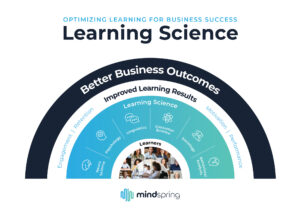It’s not a secret, here at Inno-Versity we are always advocating for the learner. That’s precisely why Communication is one of our 5 Essential Elements of Excellence. But how we define Communication might surprise you so we’ll unpack it a bit in this post. We’ll also share some easy ways to help you improve at it.
The concept of Communication is traditionally thought to be part of project management. But in our minds, Communication applies to the relationship between the instructional designer and the learner. Excellent Communication demonstrates that you value your team members. It’s no surprise when companies budget large dollar amounts to market their products to the customer with the right message and clear brand standards. But how much time and energy is spent creating learning materials that make team members feel valued in the same way? Now maybe you’re wondering how we communicate to the team members here at Inno-Versity that they are valued. We’d be more than happy to tell you! Here are some simple steps, and some a little more complex, that we would recommend broken down by the type of delivery.
eLearning:
- Optimize design for delivery. Get to know your participants. Design your content based on the way they will be access it. So if your learners are commuting, create training content that can be completed in 5-10 minute chunks. Value their busy schedules.
- Quality feedback on assessments. We’ve all taken eLearning training that included stock responses for wrong answers. If you want uninspired learners, use stock feedback. If you truly want your learners to master the content, create quality feedback. Point out why their answer was wrong, what the confusion might have been and the correct answer. Value their desire to master the content.
- Personalize the training. Such a tiny detail, and so easy to do using a tool like Articulate Storyline 2. Why not create a text variable that asks for the learner’s name and then use it throughout the training? Value a personal relationship.
Instructor-Led Training:
- Make better use of blended learning. Nothing communicates that you don’t value your learners time more than creating an instructor-led training (ILT) session that delivers basic knowledge-based information. Why not flip the learning? For a recent client, we created an eLearning module that contained mainly factual content ending with a cliffhanger scenario cartoon. In order to find out what happened, participants had to attend the ILT training. We designed this session to be entirely scenario based starting with the cliffhanger. Value the knowledge your experienced participants bring to the table and make the best use of that during an ILT session.
- Share, share, share. Take pictures of the events, post pictures of participants and share them around the organization both physically and digitally. At one of our recent training sessions, a team member created a “Caption This” contest based on the pictures from the training. That certainly created a sense of community and excitement about the training but it also honored those who had participated. Value those who come.
All types of training:
- Honor your champions. We all have them, individuals in an organization that truly care, work hard and are fully participating in training events. It’s important to honor them, but beyond that make use of their excitement and expertise. Get their feedback on ways to improve training as well as what might work with those that are less than interested in participating. While working on developing a recent faculty workshop at Cornerstone University, we realized that all the faculty that had signed up for the workshop were what we considered champions. They had already mastered the skills we were thinking of presenting, in fact, they could probably teach the session themselves. Trevor McCready, Director of Online Learning for the university, suggested instead to create more of a focus group. So we invited those same faculty, but created an informal focus group session. We asked for feedback on a variety of areas as well as suggestions for improvement. This was one of the most valuable discussions we’ve had with faculty, and we gained a wealth of insight into their thinking. Value their participation and experience.
- Pay close attention to learner evaluations. When learners truly understand that the feedback they give will be used to improve the product, they are far more likely to give quality suggestions. Rolling out stale training that contains the same errors, mistakes, typos or other issues session after session discourages. Pay attention to their suggestions. If possible, talk in-person with some to gain a better understanding. Don’t take the suggestions personally. Value their reaction to the experience.
..
What message are you communicating with your current learning materials? Inno-Versity can help you relay the right message loud and clear: you value your team members. For some thoughtful insight on this topic, click here to listen to the Everybody Matters podcast in this week’s issue.









